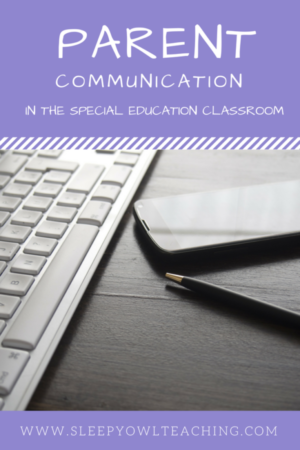Well, it’s officially August, which means I go back to school this month. Yikes! I’m still trying to hold on to the last few weeks of summer but my thoughts are turning to the coming school year. One of the most important things to do at the beginning of the school year is establishing a relationship with students’ parents. Building trust between school and home goes a long way towards a positive, successful school year. Parents need to know from day 1 that you are committed to the success of their child and building a positive atmosphere in which they will spend the majority of their day. One of the most important pieces of building relationships with parents in my classroom is communication.
Now, this is a subject that many different teachers have many different opinions on. Some communicate only by email. Some call home every week. Some send home daily communication notebooks. You name it, there’s probably a teacher out there who does it.
As for me, my classroom chooses to communicate daily AND weekly. What does that look like? Well, we use two different platforms to communicate. Of course, I am always available by email and phone. And I do use those regularly. However, there are two other mediums that I use to keep parents in the loop. Most of my students are not able to go home at the end of the day and tell their parents all about their day. To be honest, I know many neurotypical students who don’t say much to their parents either. I’m pretty sure the most typical response to “What did you do today?” is “I don’t know.” However, parents of special needs children have an extra step because many times, even when prompted, their children can’t say what they did that day.
I’ve had parents run the gamut of what they like to know about their child’s day. Some just want to know their children are happy and being well cared for. Others want to know every detail, right down to how many times their child went to the bathroom, what they ate (or refused to eat), and what activities they participated in that day.
I tend to err on the side of “there’s no such thing as too much information”. If parents aren’t as interested, they don’t have to read what I send home. If parents are interested, they can have the details they are looking for.
The first way I communicate this information is through a daily communication log. I use one from Breezy Special Ed and edited it to fit my classroom’s needs. This way you can put as much or as little information as you want. Most of it is simply circle and go to make it less time-consuming, although this could easily be done by the student himself (with a dot marker or pencil) to incorporate student self-evaluation. There is a list of therapies and specials and all you have to do it circle what the student had that day. We also leave a space for comments in the morning and afternoon. This could include activities, behavior, etc. Ours also includes a space for toileting and eating although not every teacher would need those.

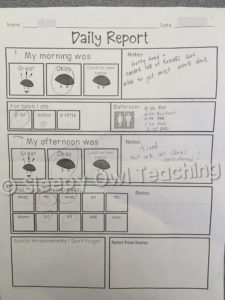
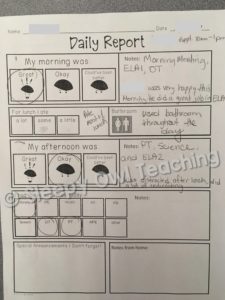
We send home one of these every day. My co-teacher had a genius idea to have them attached to a carbonless sheet so instead of making copies for our records every day, it transfers right through and we send home the top copy and keep the bottom copy.
The other way I communicate with parents is through Seesaw. Seesaw is a free digital portfolio that students can use to make and keep work. As of now, we strictly use it for parent communication. I try to send home pictures at least 2-3 times per week. These could be pictures of learning activities, inclusion time, recess, or specials. When I post something to the specific student’s portfolio, their parent gets a notification and can go check it. If I see an opportunity to snap a picture that says something about that student’s day, I will send it home through Seesaw. This is especially helpful for special activities and field trips. This way parents can get a window into their child’s day. It can help spark conversations at home or show a parent what a student is doing if that student is unable to communicate it him or herself. Seesaw also allows you to send announcements and reminders to families, cutting down on the amount of emailing necessary.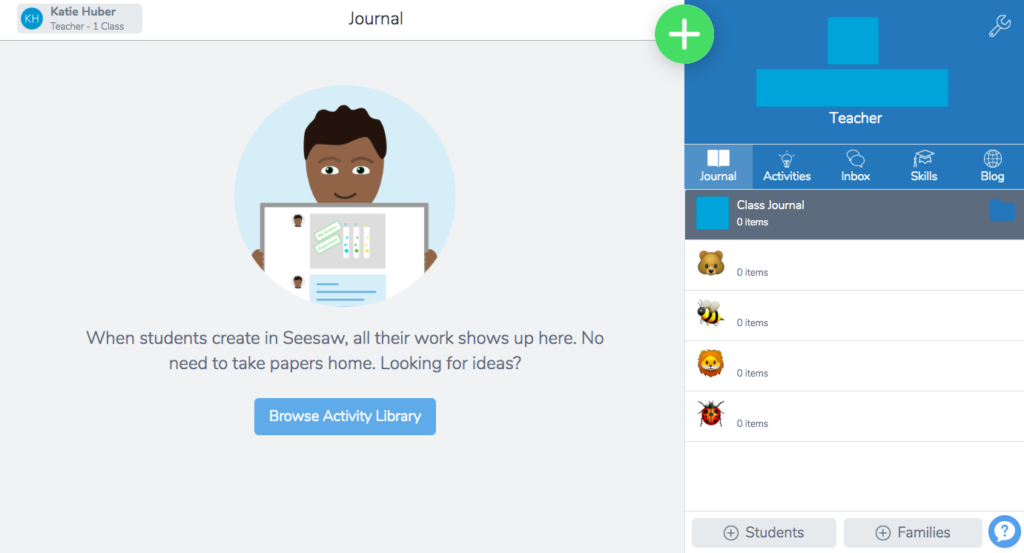
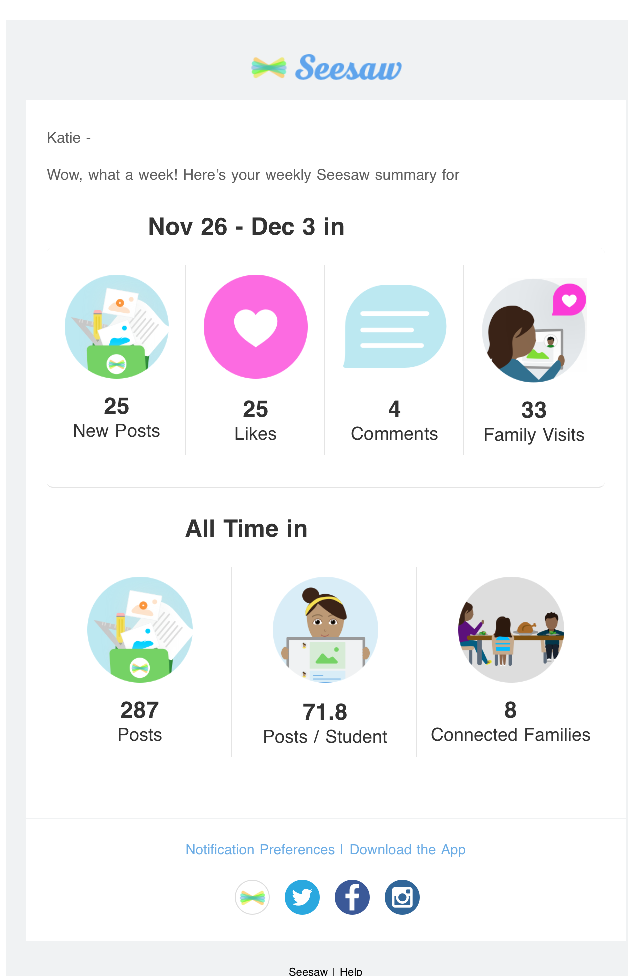
Using these two forms of communication seems to help the parents of students in my class get a better understanding of their child’s day. I will admit that I need to work on my posting to Seesaw. I take lots of pictures throughout the day but will often forget to post until the evening or late at night. I need to make it more of a routine right after school to post the photos I took that day. However, Seesaw and the communication log have been great additions to our classroom this year. Students are excited to look at pictures of their day with their parents. Parents are able to start conversations with their children and students are able to talk about their day in a way they weren’t able to before. Parents who travel and are away from their children are still able to see what they are up to. I’m excited to be able to continue this communication with parents this year and share all the fun we have at school!
What form of parent communication do you use in your classroom?
Happy teaching,
![]()

